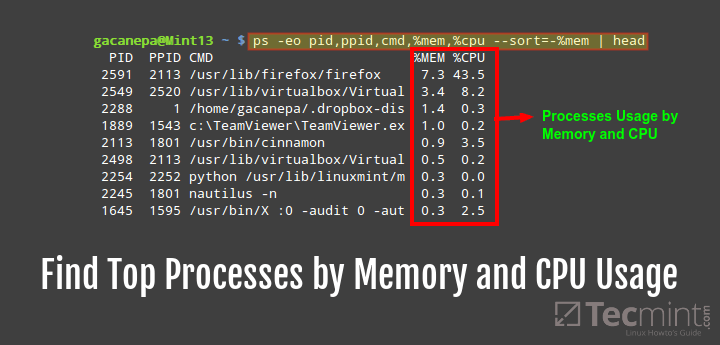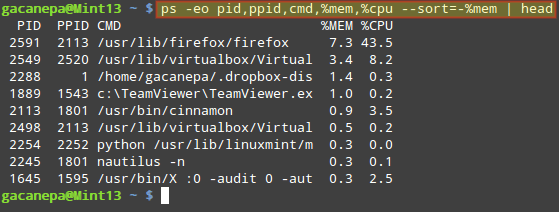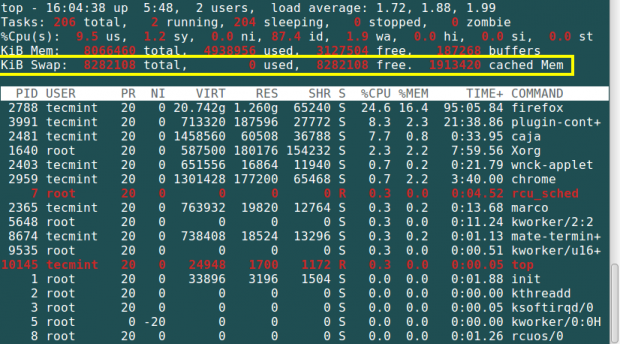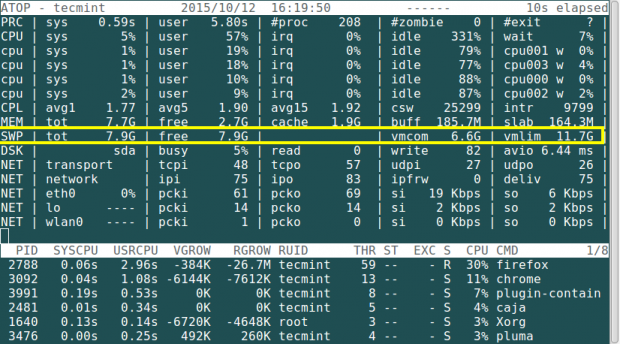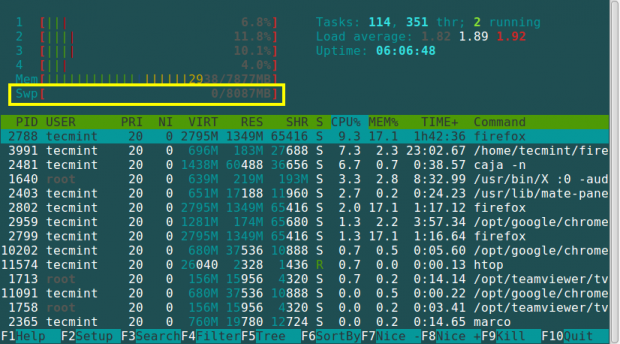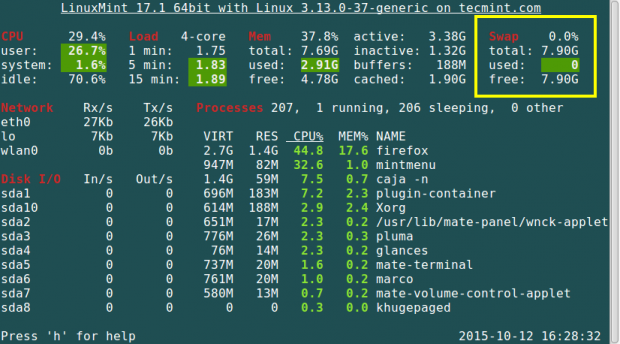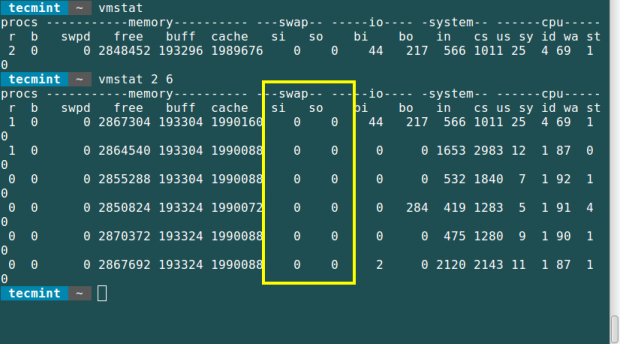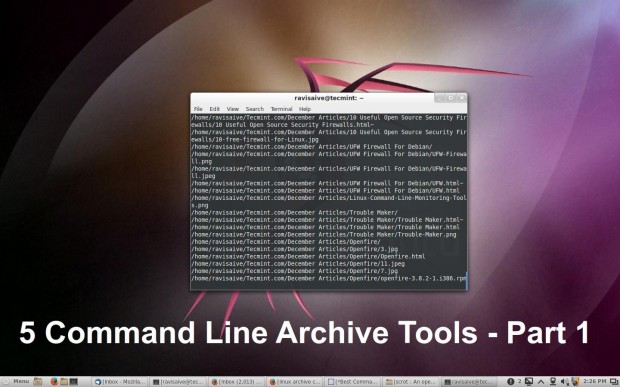Screen is a full-screen software program that can be used to multiplexes a physical console between several processes (typically interactive shells). It offers a user to open several separate terminal instances inside a one single terminal window manager.
The screen application is very useful, if you are dealing with multiple programs from a command line interface and for separating programs from the terminal shell. It also allows you to share your sessions with others users and detach/attach terminal sessions.

Screen Command Examples
On my Ubuntu 10.04 Server Edition, Screen has been installed by default. But, in Linux Mint does not have screen installed by default, I need to install it first using apt-get command before using it. Please follow your distribution installation procedure to install screen.
# apt-get install screen (On Debian based Systems)
# yum install screen (On RedHat based Systems)
Actually, Screen is a very good command in Linux which is hidden inside hundreds of Linux commands. Let’s start to see the function of Screen.
Start screen for the first time
Just type screen at the command prompt. Then the screen will show with interface exactly as the command prompt.
pungki@mint ~ $ screen
Show screen parameter
When you enter the screen, you can do all your work as you are in the normal CLI environment. But since the screen is an application, so it have command or parameters.
Type “Ctrl-A” and “?” without quotes. Then you will see all commands or parameters on screen.
Screen key bindings, page 1 of 1.
Command key: ^A Literal ^A: a
break ^B b flow ^F f lockscreen ^X x pow_break B screen ^C c width W
clear C focus ^I log H pow_detach D select ' windows ^W w
colon : hardcopy h login L prev ^H ^P p ^? silence _ wrap ^R r
copy ^[ [ help ? meta a quit \ split S writebuf >
detach ^D d history { } monitor M readbuf < suspend ^Z z xoff ^S s
digraph ^V info i next ^@ ^N sp n redisplay ^L l time ^T t xon ^Q q
displays * kill K k number N remove X title A
dumptermcap . lastmsg ^M m only Q removebuf = vbell ^G
fit F license , other ^A reset Z version v
^] paste .
" windowlist -b
- select -
0 select 0
1 select 1
2 select 2
3 select 3
4 select 4
5 select 5
6 select 6
7 select 7
8 select 8
9 select 9
I login on
O login off
] paste .
To get out of the help screen, you can press “space-bar” button or “Enter“. (Please note that all shortcuts which use “Ctrl-A” is done without quotes).
Detach the screen
One of the advantages of screen that is you can detach it. Then, you can restore it without losing anything you have done on the screen. Here’s the sample scenario:
You are in the middle of SSH-on your server. Let’s say that you are downloading 400MB patch for your system using wget command.
The download process is estimated to take 2 hours long. If you disconnect the SSH session, or suddenly the connection lost by accident, then the download process will stop. You have to start from the beginning again. To avoid that, we can use screen and detach it.
Take a look at this command. First, you have to enter the screen.
pungki@mint ~ $ screen
Then you can do the download process. For examples on my Linux Mint, I am upgrading my dpkg package using apt-get command.
pungki@mint ~ $ sudo apt-get install dpkg
Sample Output
Reading package lists... Done
Building dependency tree
Reading state information... Done
The following packages will be upgraded:
dpkg
1 upgraded, 0 newly installed, 0 to remove and 1146 not upgraded.
Need to get 2,583 kB of archives.
After this operation, 127 kB of additional disk space will be used.
Get:1 http://debian.linuxmint.com/latest/ testing/main dpkg i386 1.16.10 [2,583 kB]
47% [1 dpkg 1,625 kB/2,583 kB 47%] 14,7 kB/s
While downloading in progress, you can press “Ctrl-A” and “d“. You will not see anything when you press those buttons. The output will be like this:
[detached from 5561.pts-0.mint]
pungki@mint ~ $
Re-attach the screen
After you detach the screen, let say you are disconnecting your SSH session and going home. In your home, you start to SSH again to your server and you want to see the progress of your download process. To do that, you need to restore the screen. You can run this command:
pungki@mint ~ $ screen -r
And you will see that the process you left is still running.
When you have more than 1 screen session, you need to type the screen session ID. Use screen -ls to see how many screen are available.
pungki@mint ~ $ screen -ls
Sample Output
pungki@mint ~ $ screen -ls
There are screens on:
7849.pts-0.mint (10/06/2013 01:50:45 PM) (Detached)
5561.pts-0.mint (10/06/2013 11:12:05 AM) (Detached)
2 Sockets in /var/run/screen/S-pungki
If you want to restore screen 7849.pts-0.mint, then type this command.
pungki@mint ~ $ screen -r 7849
Using Multiple Screen
When you need more than 1 screen to do your job, is it possible? Yes it is. You can run multiple screen window at the same time. There are 2 (two) ways to do it.
First, you can detach the first screen and the run another screen on the real terminal. Second, you do nested screen.
Switching between screens
When you do nested screen, you can switch between screen using command “Ctrl-A” and “n“. It will be move to the next screen. When you need to go to the previous screen, just press “Ctrl-A” and “p“.
To create a new screen window, just press “Ctrl-A” and “c“.
Logging whatever you do
Sometimes it is important to record what you have done while you are in the console. Let say you are a Linux Administrator who manage a lot of Linux servers.
With this screen logging, you don’t need to write down every single command that you have done. To activate screen logging function, just press “Ctrl-A” and “H“. (Please be careful, we use capital ‘H’ letter. Using non capital ‘h’, will only create a screenshot of screen in another file named hardcopy).
At the bottom left of the screen, there will be a notification that tells you like: Creating logfile “screenlog.0“. You will find screenlog.0 file in your home directory.
This feature will append everything you do while you are in the screen window. To close screen to log running activity, press “Ctrl-A” and “H” again.
Another way to activate logging feature, you can add the parameter “-L” when the first time running screen. The command will be like this.
pungki@mint ~ $ screen -L
Lock screen
Screen also have shortcut to lock the screen. You can press “Ctrl-A” and “x” shortcut to lock the screen. This is handy if you want to lock your screen quickly. Here’s a sample output of lock screen after you press the shortcut.
Screen used by Pungki Arianto on mint.
Password:
You can use your Linux password to unlock it.
Add password to lock screen
For security reason, you may want to put the password to your screen session. A Password will be asked whenever you want to re-attach the screen. This password is different with Lock Screen mechanism above.
To make your screen password protected, you can edit “$HOME/.screenrc” file. If the file doesn’t exist, you can create it manually. The syntax will be like this.
password crypt_password
To create “crypt_password” above, you can use “mkpasswd” command on Linux. Here’s the command with password “pungki123“.
pungki@mint ~ $ mkpasswd pungki123
l2BIBzvIeQNOs
mkpasswd will generate a hash password as shown above. Once you get the hash password, you can copy it into your “.screenrc” file and save it. So the “.screenrc” file will be like this.
password l2BIBzvIeQNOs
Next time you run screen and detach it, password will be asked when you try to re-attach it, as shown below:
pungki@mint ~ $ screen -r 5741
Screen password:
Type your password, which is “pungki123” and the screen will re-attach again.
After you implement this screen password and you press “Ctrl-A” and “x” , then the output will be like this.
Screen used by Pungki Arianto on mint.
Password:
Screen password:
A Password will be asked to you twice. First password is your Linux password, and the second password is the password that you put in your .screenrc file.
Leaving Screen
There are 2 (two) ways to leaving the screen. First, we are using “Ctrl-A” and “d” to detach the screen. Second, we can use the exit command to terminating screen. You also can use “Ctrl-A” and “K” to kill the screen.
That’s some of screen usage on daily basis. There are still a lot of features inside the screen command. You may see screen man page for more detail.
Source







